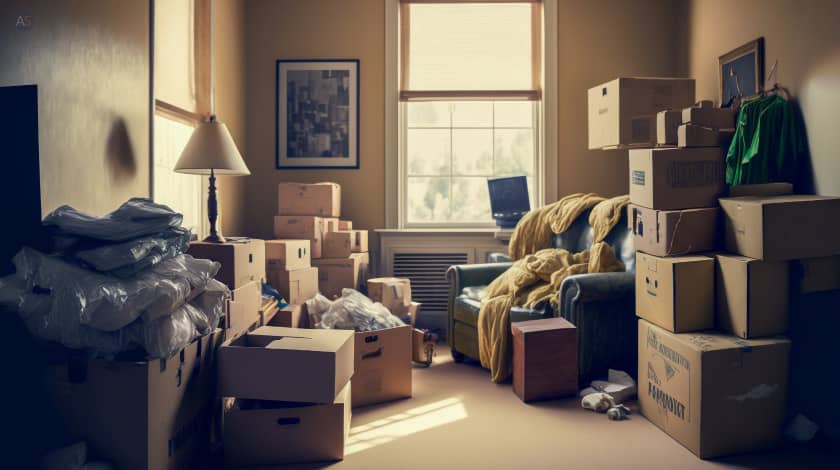Preserving Your Belongings: Long-Term Storage Guide

Life has a way of throwing curveballs, and sometimes you may find yourself needing to store your belongings for an extended period. Whether you're moving to a new city, transitioning between homes, or just looking to declutter, long-term storage is a practical solution.
But how do you ensure your items remain in good condition while they're tucked away? In this guide, we'll cover essential long-term storage tips to help you make the most of your storage space and keep your belongings safe and sound.
1. Declutter and Organize
Before you start packing, it's crucial to declutter your home and sort through your belongings. Decide which items you genuinely need to store and which can be sold, donated, or discarded. This process will not only save you time and money, but it'll also make packing and organizing your storage unit much easier.
2. Choose the Right Storage Unit
When selecting a storage unit, consider factors such as size, location, and access. Keep in mind that you might need a climate-controlled unit for delicate items like electronics, artwork, or wooden furniture. Benefits of storage units include security and protection from the elements, so make sure to explore your options.
3. Use High-Quality Packing Materials
Invest in quality packing materials like sturdy boxes, bubble wrap, packing tape, and furniture covers. These materials will help protect your belongings from dust, moisture, and potential damage during the storage period. Remember, it's better to spend a little extra on good materials now than to deal with damaged items later.
4. Pack Your Items Properly
Take the time to pack each item carefully. Pack delicate items like glassware or electronics, make sure to provide ample cushioning using bubble wrap or packing paper. Break down bulky furniture into smaller components and protect each part with furniture blankets or covers. Wrap electronics in anti-static bubble wrap or foam, and if available, place them in their original packaging. In the absence of original packaging, utilize durable boxes and a generous amount of padding.
5. Store Items Strategically
When arranging your items in the storage unit, think about access and weight distribution. Place heavy items on the bottom and lighter ones on top and store frequently needed items near the front of the unit. Use shelving to maximize vertical space and keep items organized.
6. Labeling Boxes
Labeling your boxes is an essential step in organizing your storage unit. This will make it easy to find and access specific items when needed. Labeling boxes with their contents and the room they belong to will save you time and frustration in the long run.
7. Store Items Off the Ground
Elevate your belongings off the ground to protect them from potential water damage. Use pallets, shelves, or plastic bins to create a barrier between your items and the floor. This will also improve air circulation within the storage unit.
8. Use Proper Loading and Unloading Equipment
Using the best loading and unloading equipment will make the storage process easier and safer. Dollies, hand trucks, and furniture sliders are essential tools for safely moving heavy items in and out of your storage unit.
9. Keep an Inventory List
Maintain a detailed inventory list of all items in your storage unit. This will help you keep track of your belongings and make it easier to find specific items when needed.
10. Regularly Check on Your Storage Unit
Visit your storage unit periodically to ensure that everything is in order and to address any issues that may arise. This will help prevent potential damage and give you peace of mind knowing your belongings are safe and secure.
11. Utilize Vacuum-Sealed Bags and Desiccants
Vacuum-sealed bags can be a space-saving solution for storing soft items like clothing, bedding, and curtains. These bags will protect your belongings from dust, insects, and moisture. To prevent moisture buildup, use desiccants like silica gel packets in your storage unit. These will help absorb excess moisture and protect your belongings from mold and mildew.
12. Regularly Check for Pests
Pests can cause significant damage to your stored belongings. Regularly inspect your storage unit for signs of pests, such as droppings or damage to boxes. If you notice any indications of an infestation, notify the storage facility immediately and take appropriate action to address the issue.
13. Insure Your Belongings
Consider purchasing insurance coverage for your stored belongings, especially if they are valuable or have sentimental value. This will provide financial protection in case of theft, damage, or natural disasters.
14. Update Your Contact Information
Make sure the storage facility has your current contact information on file. This will enable them to reach you in case of emergencies or other issues related to your storage unit.
Conclusion
Long-term storage is an effective solution when you need to keep your belongings safe and secure for an extended period. By following these tips, you can ensure that your items remain in good condition and are easily accessible when needed. With careful planning and a commitment to regular maintenance, you can make the most of your storage space and enjoy the peace of mind that comes with knowing your possessions are well-protected.











